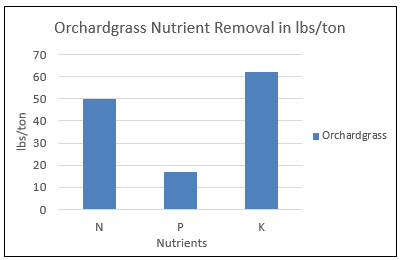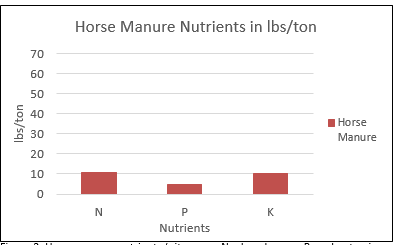An 8 step process for developing a horse manure management plan: Part 5 - Manure utilization
Need to develop a horse manure management plan? Follow this 8 article series that discusses the components of developing a horse manure management plan.
Manure utilization
In the previous article, we discussed how to transfer and apply manure to fields. Along with manure application, the utilization of manure should be assessed as well. What is meant by the term, “manure utilization?” Manure utilization involves the nutrient balance of the manure, soil, and sometimes crops and also involves other options of dealing with manure off the farm.
Manure utilization: Nutrient balance
The typical key nutrients involved with nutrient balance are Nitrogen (N), Phosphorus (P), and Potassium (K) as they tend to have the greatest impact on soil health and growth of a pasture/crop. This is where an analysis of the soil and manure become important. Testing the soil will help to give an indication of the soils nutrient levels while testing the manure shows the nutrients that can potentially be applied to a pasture/crop. Applying manure to meet the N needs of a crop is ideal, but if the nutrient saturation in the soil has too much P, this can result in loss of nutrients via runoff due to the soil being unable to retain the nutrients and crops not utilizing enough of the nutrients. This is where economic and environmental concerns come into play. Let’s take a look at an example.
In figure 1 below, the removal of nutrients from the soil of orchardgrass is shown and in figure 2, the amount of nutrients found in horse manure. The balance of phosphorus needed for orchardgrass with horse manure is shown in figure 3.
These figures show that when applying horse manure to meet the soil phosphorus replacement needs after orchardgrass is grazed (harvested), the nitrogen needs of the soil may not be met. This is why it is important to have an understanding of the dynamics of how the nutrients in manure (fertilizer source) interact with the crop or grass being grown and the soil. In being consistent in manure utilization practices, this ultimately builds up the organic matter in the soil, which produces a healthier crop/grass yield.
Figure 1: Orchardgrass nutrient removal of nitrogen (N), phosphorus (P), and potassium (K) in lbs/ton
Figure 2: Horse manure nutrients (nitrogen – N, phosphorus – P, and potassium – K) in lbs/ton
Figure 3: Phosphorus balance of orchardgrass and horse manure nutrients (nitrogen – N, phosphorus – P, and potassium – K) in lbs/ton
In order to avoid a overloading the soil with P, the 2018 Manure Management and Utilization GAAMPs should be considered any time manure is to be applied to a pasture or crop:
- Fields over 150 ppm of P – no manure application is allowed
- Fields between 75 to 150 ppm P – manure application should be based on crop removal
- Fields below 75 ppm – manure applied to meet crop N needs
Even if you are not trying to necessarily match crop needs, but are applying to a pasture, it is still important to garner a soil and manure analysis to prevent over saturation of nutrients in the soil. This is also where rotational grazing can be important and a valuable resource to keep the soil and, consequently the pasture, healthy.
Manure Utilization: how is it utilized?
There are several different options regarding how to utilize manure on farm:
- Compost and use on pastures or fields
- Land apply manure as is
- Store manure before application
There are also options to move manure off the farm, which may be necessary if nutrient concentrations in the soil are too high:
- Compost and sell manure
- Sell manure as is
- Give manure away to those who can utilize the manure
- Large dumpsters (previously talked about in article 2 of this series: Manure storage)
Be on the lookout for the next article of this developing a horse manure management plan series – Part 6, we will tackle the record keeping aspects of manure management!



 Print
Print Email
Email



